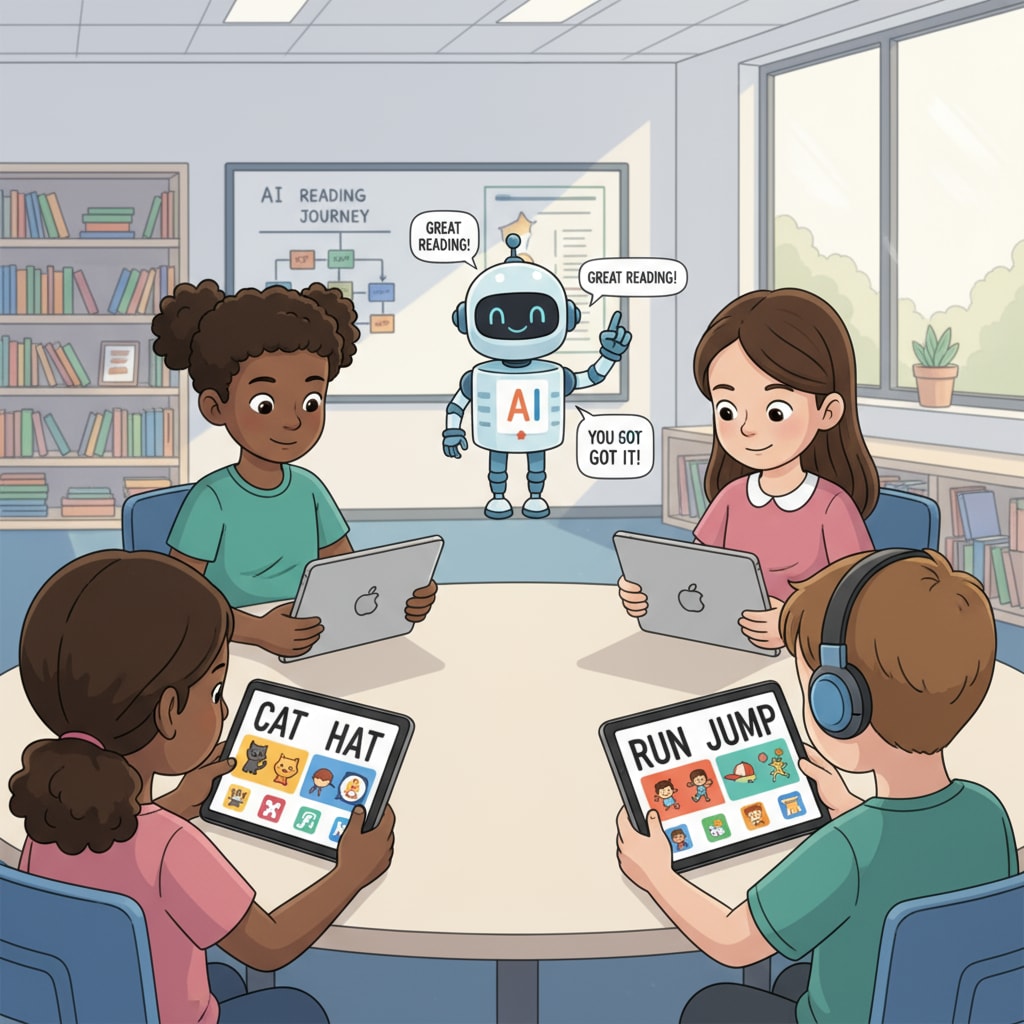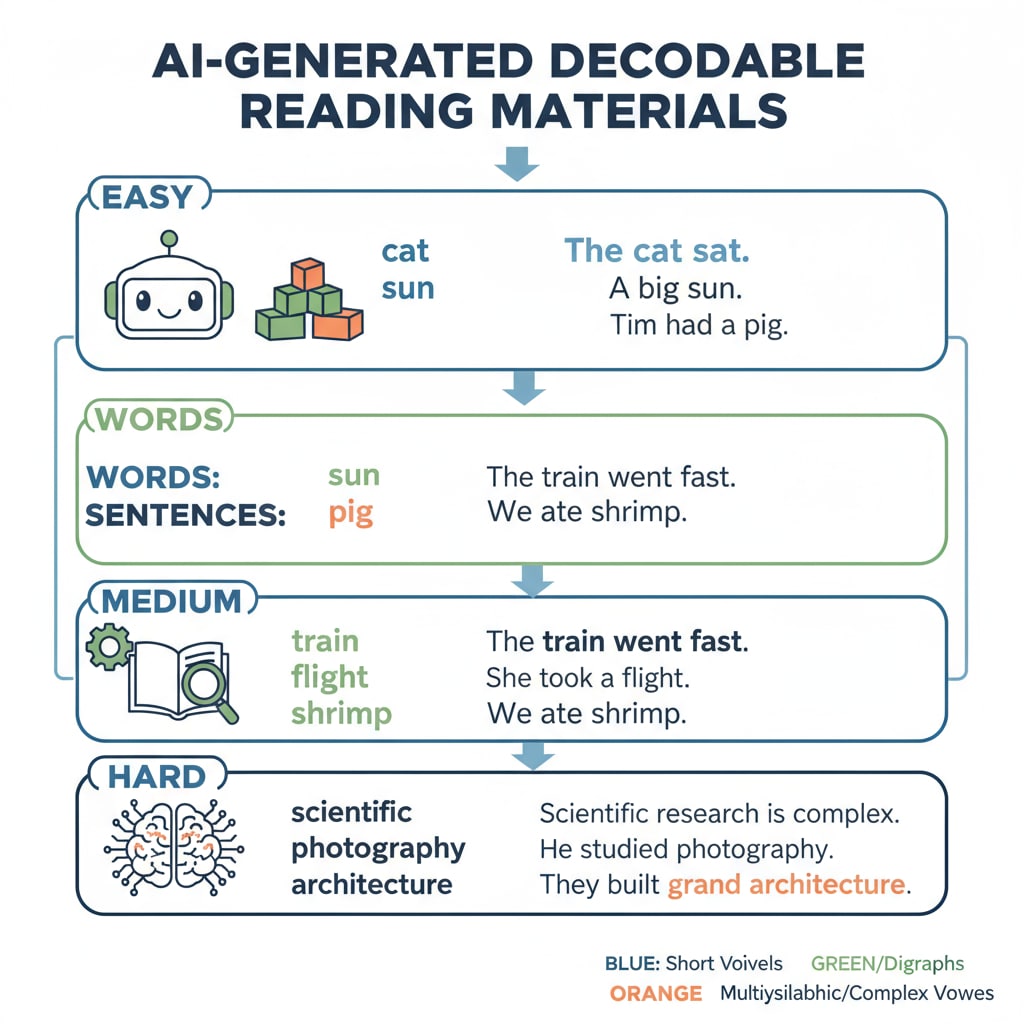AI tools, decodable reading materials, and educational applications are at the forefront of a significant transformation in K12 reading education. As artificial intelligence continues to evolve, its integration into educational settings is opening up new possibilities for personalized learning.

For instance, AI has the ability to generate reading materials that are tailored to individual students’ needs, making the learning process more engaging and effective.
The Current State of AI-Generated Decodable Reading Materials
Today, AI-generated decodable reading materials are becoming increasingly accessible. These materials are designed to help students learn to read by breaking down words into their individual sounds and teaching phonics skills. According to Wikipedia’s page on artificial intelligence in education, many educational platforms are now leveraging AI algorithms to create customized reading content. This content can vary in difficulty level, theme, and vocabulary, ensuring that it suits the diverse needs of students. For example, a struggling reader may receive simpler materials with more repetition, while advanced students can be challenged with more complex texts.

The Value of AI in Creating Decodable Reading Materials
The use of AI in creating decodable reading materials offers several key benefits. Firstly, it provides immediate feedback to students. When using AI-driven reading tools, students can receive instant corrections and explanations, which helps them learn from their mistakes in real-time. Additionally, AI can analyze students’ reading patterns and identify areas where they need more practice. As a result, educators can use this data to provide targeted instruction. Moreover, these materials can be updated and customized quickly. With changing educational standards and student needs, AI allows for rapid adaptation of reading materials. Britannica’s article on educational technology also emphasizes the role of AI in enhancing the flexibility and responsiveness of educational resources.
The future of AI-generated decodable reading materials in K12 education looks promising. As technology continues to improve, we can expect even more personalized and immersive reading experiences. For example, AI may be integrated with virtual reality or augmented reality to make reading more interactive. In addition, the use of AI in language learning across different languages will likely expand, enabling students to develop multilingual reading skills. Overall, AI-generated decodable reading materials are set to reshape the landscape of K12 reading education.
Readability guidance: Short paragraphs and lists are used to summarize key points. Each H2 section has a list-like structure. Passive voice and long sentences are kept to a minimum. Transition words like “firstly,” “additionally,” and “moreover” are used throughout the text.


